程式語言
林品儒
2015/10/22
程式語言
利用標準化的指令定義電腦的行動
但是比電腦更早被發明出來
自動織布機、自動演奏鋼琴
程式語言的歷史
<1940:打孔機
194X:組合語言
195X-196X:高階語言發明
197X:基礎範式確立
198X:功能強化
>1990:百家爭鳴
1940年代前
電腦發明之前
.jpg)
Analytical Engine (2290032530)" 由 Marcin Wichary from San Francisco, U.S.A. - Analytical Engine Mill。 使用來自 維基共享資源 的 知識共享 署名 2.0 條款授權。
分析機
蒸氣驅動,打孔紙帶輸入
四則運算、比較、求平方根
1871年被發明
使用的語言類似於今天的程式語言
1940年代
組合語言
當時只是數字的填空遊戲

這張圖是MIPS的格式(雖然是1981才發明)
http://stackoverflow.com/questions/23123106/mips-i-instruction-immediate-field
馮紐曼的八卦
沒錯就是那個天才
他的學生花時間弄組譯器(assembler)被他發現
It is a waste of a valuable scientific computing instrument to use it to do clerical work
拿珍貴的計算工具做文書工作真是暴殄天物
組合語言vs機械語言
底下是x86格式的機械語言和組合語言
8d 74 26 00 lea 0x0(%esi,%eiz,1),%esi
8b 54 24 28 mov 0x28(%esp),%edx
89 44 24 04 mov %eax,0x4(%esp)
8b 44 24 20 mov 0x20(%esp),%eax
89 54 24 08 mov %edx,0x8(%esp)
89 04 24 mov %eax,(%esp)
e8 38 06 00 00 call 6b902250 <___mingw_TLScallback>
b8 01 00 00 00 mov $0x1,%eax
83 c4 1c add $0x1c,%esp
c2 0c 00 ret $0xc
假如機械語言友善方便誰還要當丐幫
接下來
全部都是數字太恐怖了!!
不能逃不能逃
於是高階語言就出來拯救世界
1950~1960年代
高階語言發明
1957-Fortran(FORmula TRANslator)
1958-LISP(LISt Processor)
1960-COBOL(COmmon Business Oriented Language)
到現在還是很有用處
Fortran
第一個正式採用且現在還活著的高階語言
用在數學及科學的計算
計算矩陣和複數很方便
整合在GCC中
LISP
第二個被發明的高階語言
函數性程式語言
其帶來的概念被其他語言所吸收
LISP
以下為比較是否同號的程式碼
(defun same-sign (x y)
(or (and (zerop x) (zerop y))
(and (< x 0) (< y 0))
(and (> x 0) (> y 0))))
函數性語言設計
將電腦運算視為數學上的函式計算
避免程式的內部狀態
避免可以被改變的物件
可以將函式當引數傳入
避免副作用
唉呦~副作用有很嚴重嗎?
#include <stdio.h>
int main(){
int num = 100;
int *p[3] = { &num, &num, &num };
*p[0] = 200;
printf( "%d %d %d", *p[0], *p[1], *p[2]);
}
恭喜你得到3個200!!
函式當引數傳入
這個等等會再講到
#include<stdio.h>
int add(int a,int b){ return a+b; }
int call(int a, int b, int (*func)(int a,int b)){
return (*func)(a,b);
}
int main(){
printf("%d",call(100,200,add));
}
當然有其他更強大的功能
接下來
程式語言慢慢發展出了更多概念
1970年代
基礎範式確立
1972-C
1970-Pascal
1972-Prolog
1972-Smalltalk
C語言演進歷史
CPL
BCPL
B
C
BCPL
GET "LIBHDR"
LET START() = VALOF $(
FOR I = 1 TO 5 DO
WRITEF("%N! = %I4*N", I, FACT(I))
RESULTIS 0
$)
AND FACT(N) = N = 0 -> 1, N * FACT(N - 1)
B語言
/* The following function will print a non-negative number, n, to
the base b, where 2<=b<=10. This routine uses the fact that
in the ASCII character set, the digits 0 to 9 have sequential
code values. */
printn(n, b) {
extrn putchar;
auto a;
if (a = n / b) /* assignment, not test for equality */
printn(a, b); /* recursive */
putchar(n % b + '0');
}
C語言
由B語言改進而來
廣泛使用在與硬體相關的環境下
結構化程式設計
結構化程式設計
循序結構-直直跑下去
選擇結構-if,switch
重複結構-for,while
程式可以以流程圖表示
非結構化程式設計
#include<stdio.h>
int main(){
int i=0;
outer:
int j=0;
inner:
printf("*");
j++;
if(j<5){goto inner;}
printf("\n");
i++;
if(i<5){goto outer;}
}
其實只是印5*5的星星
結構化程式設計
#include<stdio.h>
int main(){
for(int i=0;i<5;i++){
for(int j=0;j<5;j++){
printf("*");
}
printf("\n");
}
}
Pascal
因為有指標以前用來上資料結構
linss:"C難看死了,Pascal多優美啊"
時代的眼淚
Prolog
運用在自然語言與人工智慧
邏輯程式設計
定義答案所需要的規則由電腦執行之
power(N,0,1):- !.
power(N,K,R):- K1 is K-1,power(N,K1,R1),R is R1*N.
Smalltalk
所有的東西都是物件(連條件和重複語句也是)
物件導向程式設計
| rectangles aPoint collisions |
rectangles := OrderedCollection
with: (Rectangle left: 0 right: 10 top: 100 bottom: 200)
with: (Rectangle left: 10 right: 10 top: 110 bottom: 210).
aPoint := Point x: 20 y: 20.
collisions := rectangles select: [:aRect | aRect containsPoint: aPoint].
物件導向程式設計
將程式和資料封裝在類別的實體中
繼承
封裝
多型
繼承
獲得原先的屬性和行為
class Bomb
def explode
print "你已經死了"
end
end
class MadeInChina < Bomb;end
MadeInChina.new.explode #=> 你已經死了
封裝
隱藏程式內部的具體執行步驟
class Killer
private
def drink_coffee;end
def read_news_paper;end
def time_to_die
print "你已經死了"
end
public
def assassinate
drink_coffee
read_news_paper
time_to_die
end
end
多型
不同類別對於同樣呼叫有不同的行為
class Wine
def drunk
print "讚啦~~"
end
end
class FakeWine
def drunk
print "你已經死了"
end
end
接下來
接下來的時代是上個時代的持續成長
將之前的構想發揚光大
1980年代
功能強化
1980-Ada
1983-C++
1987-Perl
Ada
統合美軍系統的語言之用
命名由來為愛達·勒芙蕾絲,她是第一位電腦程式設計師
雖然很嚴謹但是還是有火箭炸了...
整合在GCC中
C++
本來稱為C with classes
除了物件導向還有模版系統
現在連lambda特性都加入了
C++11,C++14...
C++模版
template <int N>
struct Factorial {
enum { value = N * Factorial<N - 1>::value };
};
template <>
struct Factorial<0> {
enum { value = 1 };
};
void foo()
{
int x = Factorial<4>::value; // == 24
int y = Factorial<0>::value; // == 1
}
C++11的lambda
長得很像之前的功能齁
#include<stdio.h>
int call(int a,int b,int (*func)(int,int)){
return func(a,b);
}
int main(){
auto add = [](int a, int b) { return a + b; };
printf("%d",call(100,200,add));
}
反正看不太懂就是了
Perl
多用途的直譯式語言
"不只一種方法來做一件事"
因為自由度太高所以可讀性差...
Perl的神code
說可讀性差?哪有可能啊
$_='while(read+STDIN,$_,2048){$a=29;$b=73;$c=142;$t=255;
@t=map{$_%16or$t^=$c^=( $m=(11,10,116,100,11,122,20,100)[$_/16%8])&110;
$t^=(72,@z=(64,72,$a^=12*($_%16 -2?0:$m&17)),$b^=$_%64?12:0,@z)[$_%8]}(16..271);
if((@a=unx"C*",$_)[20]&48){$h =5;$_=unxb24,join"",@b=map{xB8,unxb8,chr($_^$a[--$h+84])}@ARGV;s/…$/1$&/;
$d=unxV,xb25,$_;$e=256|(ord$b[4])<<9|ord$b[3];
$d=$d8^($f=$t&($d12^$d4^ $d^$d/8))<<17,$e=$e8^($t&($g=($q=$e14&7^$e)^$q*8^$q<<6))<<9,$_=$t[$_]^ (($h=8)+=$f+(~$g&$t))for@a [128..$#a]}print+x"C*",@a}';
s/x/pack+/g;eval
請吃雞排的時候到了
接下來
生產力也被視為語言的重要指標
網際網路時代來啦~~
1990年代後
百家爭鳴
1991-Python
1993-Ruby
1995-Java
1995-JavaScript
2001-C#
Python
直譯式語言但有編譯功能
"用一種方法,最好是只有一種方法來做一件事"
縮排與單行長度限制讓可讀性高
歐美流行的語言
Ruby
完全物件導向的直譯式語言
由日本人發明所以支援多位元組字元
"讓程式設計更快樂"
"想盡辦法讓寫程式更輕鬆"
特色:區塊,猴子補丁
區塊
呼叫方法時可以傳入一段程式碼
arr=nil
File.open('file.txt','r'){|file|
str=file.read
arr=str.split(/ /)
arr.collect!{|word| word.upcase!}
}
可以用在物件的迭代之外
Monkey Patching
連核心功能都能重新導向的語言
$require_count=0
module ::Kernel
alias origin_require require
def require(lib)
origin_require(lib)
$require_count+=1
Game.draw_loading
end
end
這段程式用在遊戲載入的進度表
反射性
Ruby可以在執行時動態操作類別的成員或方法
class Point
attr_reader :x,:y
attr_accessor :value
define_method(:~@){
@x,@y=@y,@x
}
end
可以設定實體變數讀寫的權限甚至動態定義方法
Ruby的優缺點
自由度高
可讀性高
爽快度高
但是沒有編譯器...
Java
跨平台的編譯式語言
使用JVM運行自己的位元碼
安卓系統用Java但是不用JVM
JavaScript和Java沒有關係
JavaScript
本來叫作LiveScript
為了出名就和Java合作改名字
大量使用在網頁前端或者少量伺服器後端
原型程式設計
C#
M$在.net平台上開發的程式語言
使用.net虛擬機運行
有圖形介面可以用贏一半
千萬別念成西井